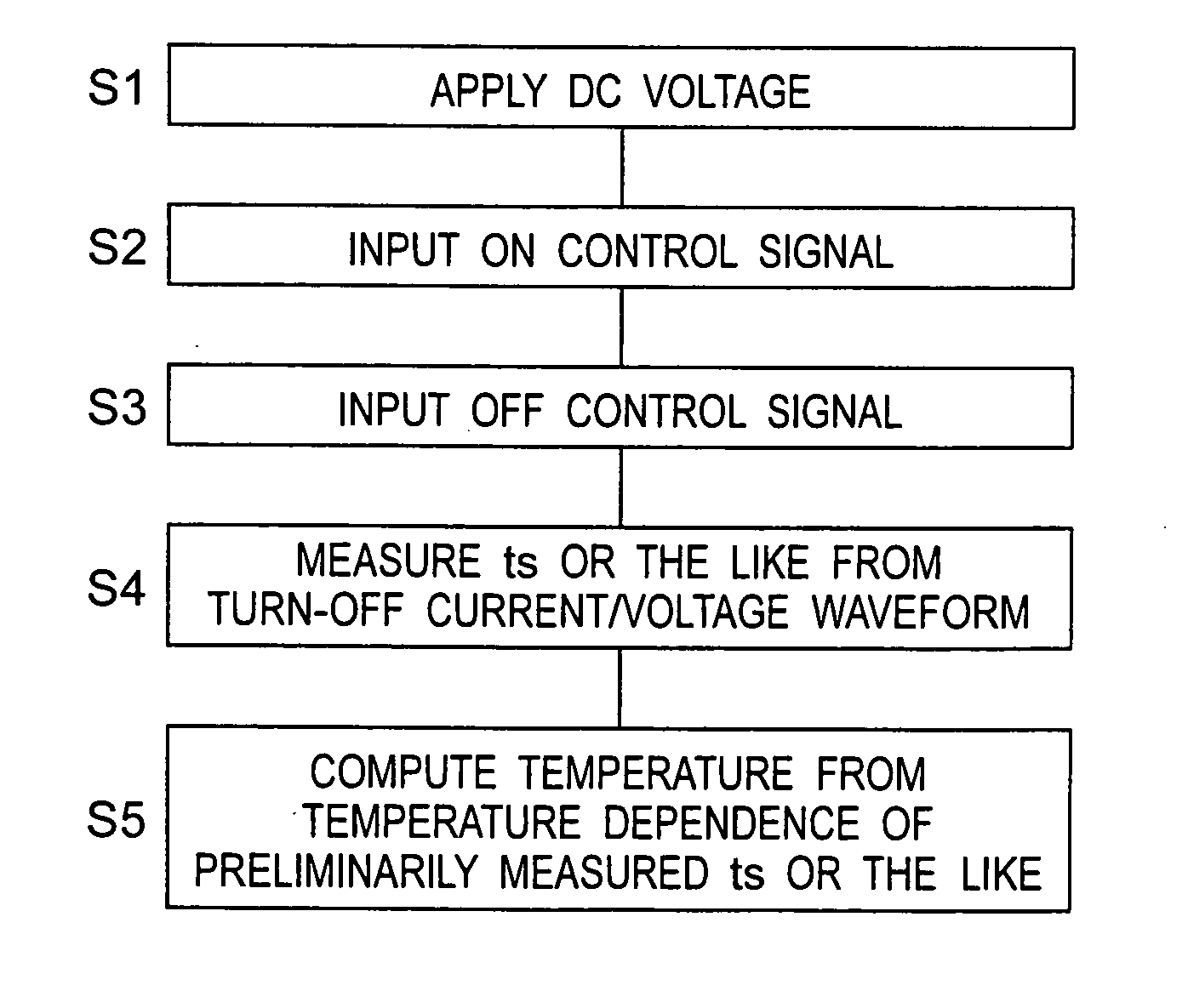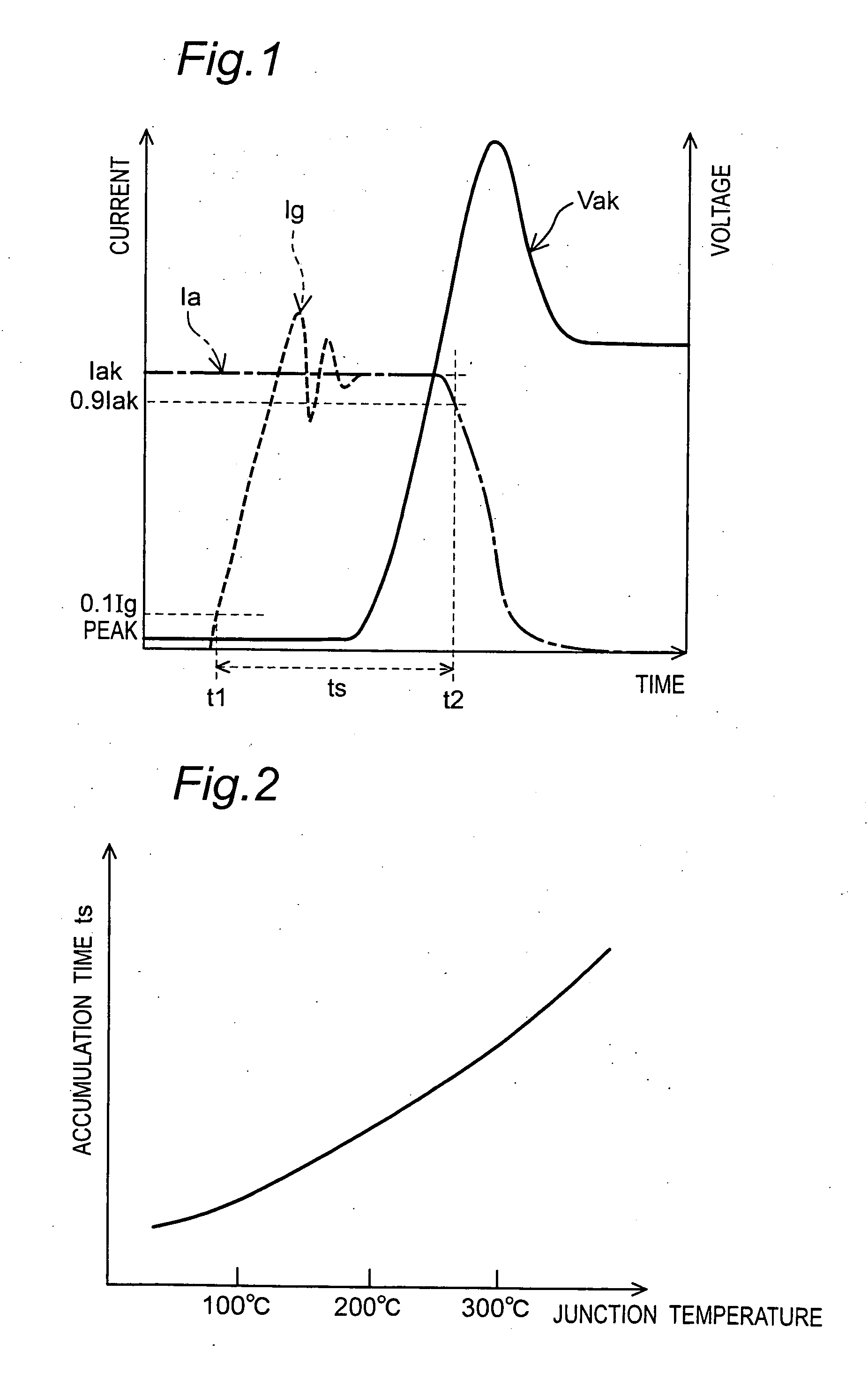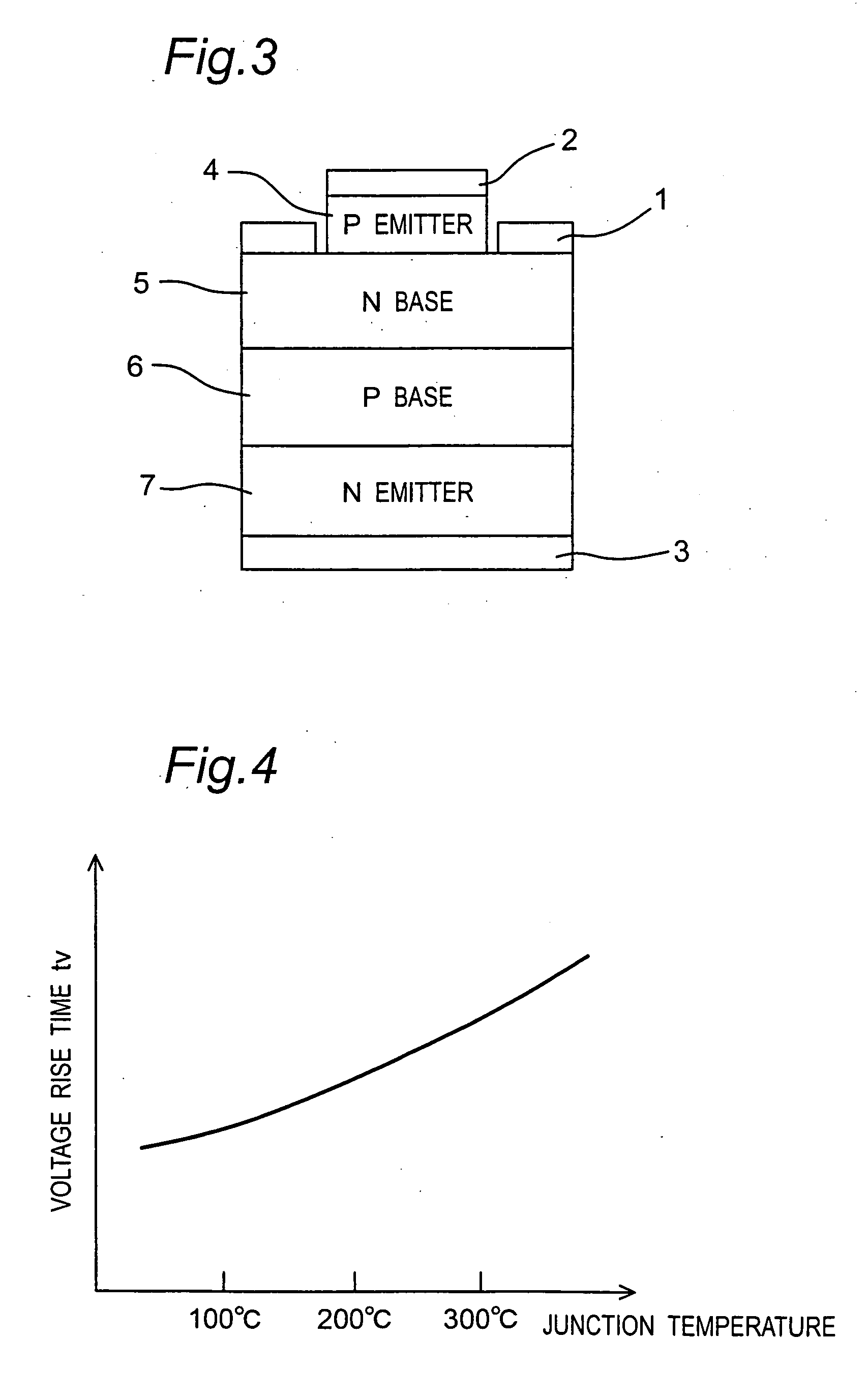Method for measuring temperature of semiconductor device and apparatus for measuring temperature of semiconductor device
a technology of semiconductor devices and measurement methods, applied in the direction of instruments, heat measurement, material analysis, etc., can solve the problems of junction temperature detection errors, measurement accuracy deterioration, and inability to use the junction temperature detected by the thermal element for protection from heating, etc., and achieve the effect of high accuracy and without delay
- Summary
- Abstract
- Description
- Claims
- Application Information
AI Technical Summary
Benefits of technology
Problems solved by technology
Method used
Image
Examples
first embodiment
[0072]A temperature measurement method for semiconductor devices, which is a first embodiment of the invention, is described with reference to FIGS. 1 to 3. The first embodiment is a method for detecting a junction temperature of a SiC GTO (Gate Turn-Off thyristor) as an example of a semiconductor switching element without delay. FIG. 3 shows an example of the GTO structure, where reference numeral 1 denotes a gate, 2 denotes a cathode, 3 denotes an anode, 4 denotes a P emitter, 5 denotes an N base, 6 denotes a P base, and 7 denotes an N emitter.
[0073]In the GTO, with a potential of the anode 3 higher than a potential of the cathode 2, a potential of the gate 1 is set lower than the potential of the anode 3, and a forward bias voltage is applied to between the anode 3 and the gate 1. Then, a turn-ON current flows from the anode 3 to the gate 1, and moreover a current flows from the anode 3 to the cathode 2, so that the GTO turns ON, resulting in an ON state.
[0074]In this ON state, a...
second embodiment
[0088]Next, a temperature measurement device for semiconductor devices, which is a second embodiment of the invention, is described with reference to FIGS. 6 to 8.
[0089]This measurement device 30 for junction temperatures has a DC power supply 31, a capacitor 32 connected in parallel with the DC power supply 31, and a first terminal 33, a second terminal 34, a third terminal 35. Between the first terminal 33 and one end of the DC power supply 31, a load reactor 36 and a first transformer 38 as an output current measurement section are connected in series. Also, the third terminal 35 is connected to the other end of the DC power supply 31. Besides, a feedback diode 37 is connected in parallel with the load reactor 36.
[0090]Also, a voltmeter 40 as an output voltage measurement section is connected between the first terminal 33 and the third terminal 35. One end of a gate circuit 41 is connected to the first terminal 33, and the other end of the gate circuit 41 is connected to the seco...
third embodiment
[0108]Next, a thermal resistance measurement method for semiconductor devices, which is a third embodiment of the invention, is explained. The thermal resistance measurement method of this third embodiment makes use of the junction temperature measurement method of the first embodiment described above.
[0109]In this third embodiment, first, as shown by step S11 of FIG. 9, with respect to a SiC GTO (Gate Turn-Off thyristor) as an example of a semiconductor switching element that is an object of thermal resistance measurement, relational characteristics between accumulation time is and junction temperature illustrated in FIGS. 2, 4 and 5, relational characteristics between voltage rise time tv and junction temperature, and relational characteristics between current decay time ti and junction temperature are determined from such turn-OFF waveforms (gate turn-OFF current Ig, anode current Ia, anode-cathode voltage Vak) as illustrated in FIG. 1 in the same manner as described in the first...
PUM
| Property | Measurement | Unit |
|---|---|---|
| temperatures | aaaaa | aaaaa |
| temperatures | aaaaa | aaaaa |
| temperature | aaaaa | aaaaa |
Abstract
Description
Claims
Application Information
 Login to View More
Login to View More - R&D
- Intellectual Property
- Life Sciences
- Materials
- Tech Scout
- Unparalleled Data Quality
- Higher Quality Content
- 60% Fewer Hallucinations
Browse by: Latest US Patents, China's latest patents, Technical Efficacy Thesaurus, Application Domain, Technology Topic, Popular Technical Reports.
© 2025 PatSnap. All rights reserved.Legal|Privacy policy|Modern Slavery Act Transparency Statement|Sitemap|About US| Contact US: help@patsnap.com



